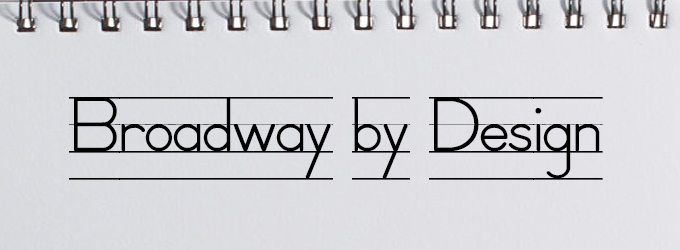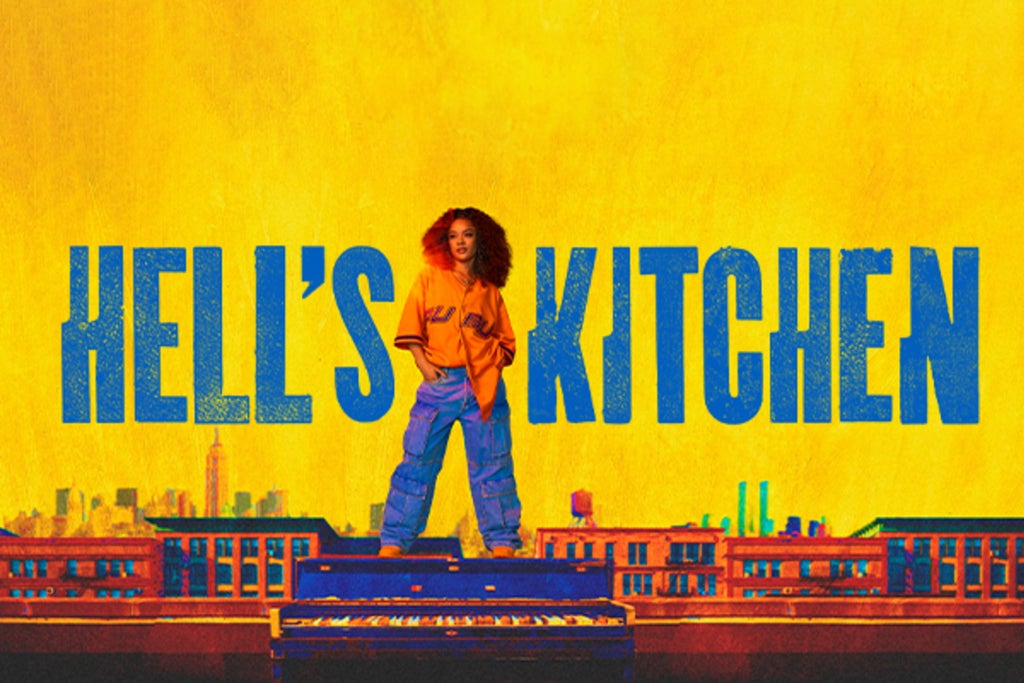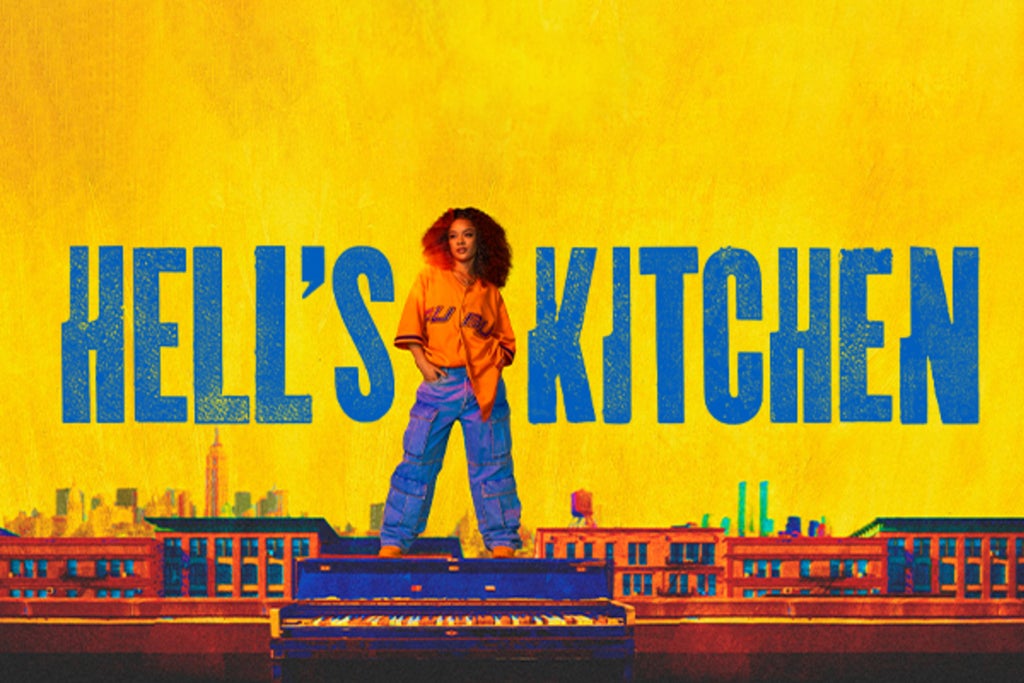Broadway By Design: HELL'S KITCHEN
Hell's Kitchen is running on Broadway at the Shubert Theatre.
In Broadway by Design, BroadwayWorld is shining a spotlight on the stellar designs of this Broadway season, show by show. Today, we continue with the five Tony-nominated creatives from Hell's Kitchen- Scenic Designer Robert Brill, Projection Designer Peter Nigrini, Lighting Designer Natasha Katz, Sound Designer Gareth Owen, and Costume Designer Dede Ayite.
Ali is a 17-year-old girl full of fire – searching for freedom, passion and her place in the world. How she finds them is a New York City coming-of-age story you've never felt before. Rebellious and stifled by an overprotective single mother, Ali is lost until she meets her mentor: a neighbor who opens her heart and mind to the power of the piano. Set to the rhythm of the 90s, Hell's Kitchen is a love story between a mother and daughter. It's about finding yourself, your purpose, and the community that lifts you. Come remember where dreams begin.
Where did the design process begin? Scenic designer Robert Brill tapped into his own past. "My own connection to the Hell's Kitchen neighborhood runs deep. In the mid-90s, I lived just north of Manhattan Plaza, and my daughter Sophia grew up in that vibrant community," he explained. "In fact, her preschool was in the basement of Manhattan Plaza, and PS212 was her lower school, which shares the same building as the Professional Performing Arts School where Alicia had attended years earlier. Many of my daughter’s close friends lived in the Manhattan Plaza towers, soworking on this piece held significant meaning for me.

"Given that music is the heartbeat of the story, director Michael Greif and I began by exploring how an onstage band could represent the community of artists and musicians that were Ali’s creative hive and inspired her appreciation for music. This evolved into two multi-story structures housing the band, symbolizing the Manhattan Plaza towers. From there, we imagined a complex series of abstract structural elements, echoing the architecture and the rhythm of alternating balconies that form the towers’ facade. Collaborating with Alicia, who was keen on evoking the gritty streets of New York, we felt confident in this ever-changing and densely layered collage of moving—and sometimes disorienting—elements."
Projection designer Peter Nigrini had similar life experience to pull from. "The story of Hell’s Kitchen is one of extremes, it one of New York seen through the eyes of Ali; full of the excitement and yearning of youth, the city’s grit and sheen, anguish and passion," Negrini explained. "Having spent my 20s in the New York in the same era that Hell’s Kitchen takes place, so much of the inspiration for the design came from my own experience, albeit in Alphabet City as opposed to Hell’s Kitchen.

"There is no doubt my New York was very different than that of our characters, but there are still many things that are universal. The struggles of youth and coming into our own as adults, the thrill and danger that New York presents, and the value of community wherever we might find it. On the surface these ideas might not feel particularly relevant to a design, but they are in fact critical to it. The guiding principal if this design is to present, not the world as it is, but instead the world as seen through the eyes of our protagonist, colored in a way by memory and emotion. I often think about the idea of a life having a soundtrack; just as film provides a score, or a musical provides songs the projection design for Hell’s Kitchens paints a picture for every moment of Ali’s journey."
"The music is the catalyst for the lighting," explained ligting designer Natasha Katz. "The complex rhythms, vocals and orchestrations are mirrored in the lighting through movement, color and shadow. The joyous numbers on the street are potpourri of ever changing colored light. At other times the lighting feels like the cool grittiness of the city or the loneliness of a young girl alone in her small apartment longing to see the world outside.

"I grew up in New York City," Katz continued. "It holds so many personal memories for me. When I first saw the set, projections and costumes I felt like I was on the streets of my childhood. Robert Brill’s skeletal sliding panels conveyed a feeling of the street, the chaos, the love, the vibrancy of an ever changing city. The panels slide and raise in so many configurations, just like the different streets of our city. The inspiration never stopped as the process continued to flow. Add in Peter Nigrini’s projection of images of New York, Dede Ayite’s colorful costumes of the period, Gareth Owen’s sound, the visceral choreography, the story, the direction and the stage was set for me to add the lighting."
Sound designer Gareth Owen has no trouble pulling inspiration from Keys as well. "Inspiration for a show based around the music of Alicia Keys is easy to find - I’ve had every album she’s ever written downloaded on my phone for as long as I’ve had an iPhone," he joked. "Not only that but there is a plethora of live performances available for YouTube viewing combined with the fact that I’ve seen her in concert more than once… as if that wasn’t enough, sitting down for dinner with her and her music supervisor Adam Blackstone gave me everything I needed to know and then some..."
Costume designer Dede Ayite looked to the times. "I was inspired by the unapologetic fashions of the 90s, the daring sense of self and the ability for folks to reinvent themselves through their clothing," she said. "A bold sharing of identity through creative silhouettes, graffiti and colors. The energy of the city in the 90s served as a big source of inspiration for me. It straddled danger, sweetness and love of music. Hip hop also set the tone for fashion and provided permission for folks to lean into their full selves."
![]()
Where did the design team's biggest challenges arise? "The biggest challenge was finding ways to capture the silhouettes and eccentricity of the time period while ensuring the dancers are able to go full out with the magnificent choreography created by the Camille Brown," continued Ayite.
"Capturing the texture, grit and humanity of a city made of brick, steel and glass," said Nigrini. "The greatest challenge and I feel, success of the design (both scenic and projection) is capturing the energy and tumult of the streets. Robert Brill and I very consciously chose to pull our in polar opposite directions; the scenery is minimalist, without color and texture, its power is all in line of form and a complexity of layers. Every line is perpendicular, just like that of Manhattan Plaza or the Manhattan street grid. By contrast, the projection is testament to how humans make these places our own, full of storefronts, signs, posters graffiti, the stuff of everyday life, and how light moves through the spacing between our built environment drenching our world in color and texture.
"The set moves so often it’s hard to get light onto the stage," said Katz. "This ended up being a great asset to the grittiness of New York by using shadow as much as light, along with making it easier to isolate scenes in different parts of the stage, underlining the character’s feelings of isolation. I used low side often, a magical angle of light which was able to sneak past the scenery and carve out the actors and dancers. I used this to work with the staging and choreography by etching out the side of the body, the arms, the hands and the movement. And then!When the panels opened up the lighting expanded with joy through color and brightness as the community of our beautiful city came together. As so often happens, the liability turned into an asset"

"New York City, especially midtown, is a dynamic and ever-changing visual and physical landscape. It’s an exhilarating and overwhelming collection of fragments--a kaleidoscope of images, sights and sounds--that coalesce, sometimes chaotically, into an immersive puzzle-like experience," added Brill. "Working with our incredible design team, including projection designer Peter Nigrini, lighting designer Natasha Katz, sound designer Gareth Owen, and costume designer Dede Ayite, our goal was to create a dynamic, shifting landscape that reflects the vibrancy of the city."
"Hell’s Kitchen needs a design ethic that differs quite considerably from other shows I have done in New York," added Owen. "Alicia Keys has an extremely exact sonic signature - she demands absolute clarity and absolute precision, and, frankly, she and her music team pushed me to a level of precision I wasn’t honestly sure I’d be able achieve. The Shubert theater was not designed for amplified sound so getting a low end that gave Alicia the bass she needed without disrupting the neighbouring shows kept us on our toes. All of this, combined with a relatively low weight load rating for the theatre roof meant that we really had our work cut out for us. Hopefully all the hard work paid off as I certainly enjoyed the challenge!"
Hell's Kitchen is running on Broadway at the Shubert Theatre.




